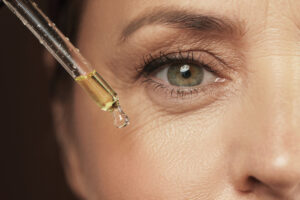These aging tests will tell you how fit you are!
Wouldn’t it have been incredible to have a pill that helped us accomplish everything we could through physical exercise? Unfortunately, this is not possible, but you should know that fitness is more than breaking a sweat. Here are some aging tests that will help you determine how well you do in the following specific areas: flexibility, endurance, balance, and muscular strength.
The aging tests we want to present you with are accessible, and you can do all of them by yourself at home. You will need just your usual fitness equipment and a phone or chronometer. These aging tests are designed to help you see how well you are aging, and they can also support you in creating the fitness regimen that suits you the best.
Also, we need to mention that all of the tests are used by the Mayo Clinic to test the fitness and health of their patients. Are you ready to see how well you are aging? If your answer is yes, then give these tests a chance!
How to get the most accurate results
Before we start, we would like to advise you on how you can get accurate results. There are a few simple steps you should follow to get the most out of these aging tests.
First of all, if you already have an exercise routine, you should take the tests before exercising because otherwise your performance will be affected.
Check how you feel before any test. Do you feel alright? Are you ill? Do your muscles feel sore, tired, or stiff? When performing the aging tests, you should be in your best physical condition, and if this is not the case, postpone taking them.
Never forget to warm up! You don’t want to suffer any injuries, and this is why warming up is essential. You don’t need to do anything special; walking in place for a little while, 3 to 5 minutes, should be enough.
In terms of clothing, you need something you feel comfortable in and that doesn’t restrict your movements in any way. So, choose loose sports clothing and a comfortable pair of sneakers, and you are good to go.

1. Flexibility
Ok, let’s start this series of aging tests with flexibility. What is it, and why is it important? When you are flexible, it means your joints can move comfortably, covering their complete range of motion. This promotes better posture, which means less postural-related pain. Less pain means less stress and better blood circulation.
How can you test your flexibility? This is easily done at home, and you can determine your range of motion in your hips, lower back, and hamstrings. What you will need for this one of the aging tests is a yardstick. We advise using this tool instead of other measuring tools because it is stiff and you can measure more accurately.
Take the yardstick and place it horizontally on the floor. Find the 15-inch point, take some tape, and secure it. Then you should sit on the floor, and the yardstick should be positioned between your legs.
Your soles should be parallel with the 15-inch mark. After you have positioned yourself properly, extend your arms, put them together, take a deep breath, and as you exhale, lower yourself gently, leaning forward as much as possible. Try to hold the position for a few seconds.
Repeat this three times and use the highest value for the results. If you are in your 50s, the average is 16.5 inches for men and 19 for women. If you are in your 60s, the average is 15.5 inches for men and 17 for women.
2. Balance
If we were to ask random people what the main cause of hip fractures is, they would probably say osteoporosis. But this is not true; the main culprit is instability. This is why it is important to have a better balance. And we have one of the aging tests that is perfect for measuring how good your balance is.
A new study in the British Journal of Sports Medicine found that being able to stand on a single foot for at least 10 seconds is associated with a lower risk for fatal accidents in people aged 51 to 75.
Of the aging tests we want to present, we have the one-legged balance test. What you want to do is take off your shoes and find a wall or a countertop you feel comfortable standing near.
Now comes the balance part. Rise one of your feet slightly off the ground and try to balance on one leg. Keep this position for as long as you can, and measure the time you can hold it before reaching for support. Repeat the test while using the other leg.
You will need to do this test three times with each leg, and for the results, you will choose the best time out of the three repetitions.
For those who are in their 50s, the average scores are as follows: 41.5 seconds for men and 40.9 seconds for women. For those in their 60s, the average scores are 33.8 for men and 30.4 for women.

3. Aerobic fitness
Also known as cardiovascular fitness, it is one of the best indicators of health and mortality. If you have a higher aerobic level, it means you can also store more oxygen that your heart and muscles can use to create energy.
Walking speed is an excellent indicator of fitness. A 2019 study of over 475,000 adults published in Mayo Clinic Proceedings discovered that individuals who walk more swiftly have higher lifespans.
It would have been impossible, out of all aging tests, to not have one that could measure your aerobic fitness. It is called the 1-mile walk, and as its name suggests, you need to measure how long it takes you to walk one mile.
The easiest way to do it is to go to a standard quarter-mile track and walk as fast as you can for four laps, as it is equal to 1 mile. If you don’t have a quarter-mile track nearby, you can find a flat road, take your car, and use its odometer to measure one mile. After this, take the test.
Use the stopwatch your phone has, start the clock, and walk as fast as you can. Remember, you don’t have to run; just walk rapidly at a steady pace. Once you have completed the mile, stop the clock and check your time.
The average for men and women in their 50s is 14:25 to 15:12, respectively, 15:37 to 17:00.
If you want to improve your score, you can start by adding cardio exercises to your routine. For moderate-intensity cardio exercise, you will need around 150 minutes per week, and if you want to try high-intensity exercise, you will need only 75 minutes.
Walking, jogging, cycling, stair-climbing, dancing, swimming, and Zumba courses are some activities that are beneficial and will help you have aerobic fitness. What matters is that your pulse rises to 60 to 70 percent of your maximal heart rate (MHR) and remains there throughout the workout.
If you want to start exercising, you might need a yoga mat: Amazon Basics 1/2-Inch Extra Thick Exercise Yoga Mat
We know that you want to keep yourself healthy and in the best shape possible, but some exercises can be harmful, and we believe you might want to learn more about this: The Top 7 Exercises You Should Avoid After 60



















